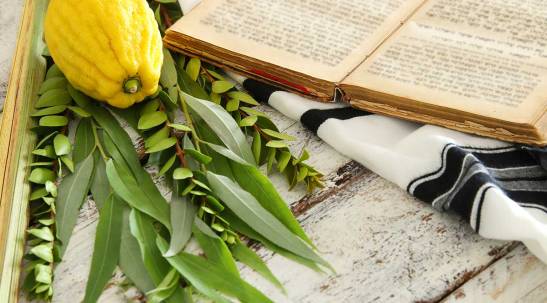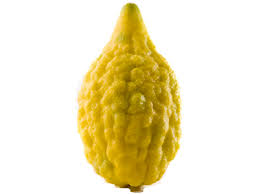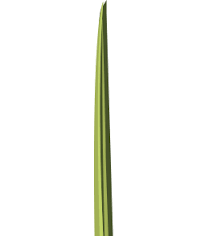Rastafari Sukkot JAH TABERNACLES Feast; Lulav(b)

#Rastafari Midrashim presents a clipping courtesy of John J Parsons hebrew4christians ; Re-Publicized at – LOJS Yeshiva for Rastafari Hebrew Torah Studies foreword and edits provided by Ras Iyason Tafari #Sukkot #chagHaAsif #Lulav
While studying and contemplating the symbolism that God utilizes in His Word to teach His children, abundant insight could be immediately ascertained by recognizing the first principle: (namely) God made man in His image and after his likeness, Man fell from his position because of disobedience hence pointing to the spiritual inner resurrection life provided for in and through the Messiah Yeshua.
As it is written; So also is the resurrection of the dead. It is sown in corruption; it is raised in incorruption: It is sown in dishonour; it is raised in glory: it is sown in weakness; it is raised in power: It is sown a natural body; it is raised a spiritual body. There is a natural body, and there is a spiritual body. And so it is written, The first man Adam was made a living soul; the last Adam was made a quickening spirit. (1 Corinthians 15:42-45)
In addition to the sukkah, the most prominent symbol of Sukkot is the Arba’at Ha-minim (אַרְבַּעַת הַמִּינִים) – “the Four Species,” or the four kinds of organic products mentioned in the Torah regarding the festival of Sukkot: “On the first day you shall take the product of goodly trees, branches of palm trees, boughs of leafy trees, and willows of the brook, and you shall rejoice before the LORD your God for seven days” (Lev. 23:40). These four items pertain to produce from specifically found in the “land of Israel”.
On the afternoon before Sukkot begins, it is customary to “assemble” the four species into a “bouquet” while standing inside your sukkah. Collectively the four items are sometimes called the “lulav,” since the palm branch occupies the central position in the grouping of the four elements:
The Four Species:

Etrog (אֶתְרוֹג), a lemon-like citrus fruit (citron) referred to as pri etz hadar [“the product of goodly trees”] that is minimally the size of a hen’s egg. An etrog with an intact pitam (stem) is considered especially valuable.
The etrog is said to symbolize the heart. The sages say the word “etrog” is an acronym for “faith (אֱמוּנָה), repentance (תְּשׁוּבָה), healing (רְפֻאָה), and redemption (גְּאֻלָּה).” Also, the initials of the words “Let not the foot of pride overtake me” (Psalm 36:12) – אַל־תְּבוֹאֵנִי רֶגֶל גַּאֲוָה – spell the word “etrog,” suggesting that the fruit of the humble heart is most beautiful in the eyes of heaven…

Lulav (לוּלָב), a ripe (i.e., green) date palm frond [“branches of palm trees”]. The lulav must be sturdy and straight, with whole leaves that lay closely together and are not broken at the top. Be careful when you wave your lulav, since the leaves can become frayed, bent, or even broken if you hit something!
If the etrog represents the heart, the lulav is said to represent the spine or backbone of a person. Notice that the word lulav (לוּלָב) can be broken down as לוֹ (“to him”) and לֵב (“heart”). A person who loves the LORD bekhol levavkha, with all his heart, will be given “spiritual backbone,” real conviction and strength. Note: The term “lulav” also refers to the combination of all three types of branches that are bound together for ceremonial waving (see below).

Hadas (הֲדַס) three myrtle branches [“boughs of leafy trees”]. The leaves of the hadas grow in tiers of three leaves each. You will need three hadasim to create the lulav bundle.The leaves of a myrtle branch resemble the shape of eyes, and therefore the sages associate them with seeing and vision.
Aravah (עֲרָבָה), the leafy branch of a willow tree [“willows of the brook”]. The branches grow long and are lined with long, narrow leaves. Two aravot are needed for the lulav bundle. Aravot need lots of water or they dry out. Often they are wrapped in a moist towel during Sukkot.
The leaves of the willow are used based on the Scripture: “Extol Him who rides on the clouds [i.e., aravot: עֲרָבוֹת], the LORD is His name” (Psalm 68:4).
Note: Aravot are also used for a separate ceremony on Hoshanah Rabba (the last day of Sukkot) when the branches are beaten against the ground until many of the leaves fall out. This ceremony, called the “beating of the willows,” is intended to symbolize ultimate victory over our enemies.
The Sefer Ha-Chinuch states: “Etrog refers to the heart, the place of understanding and wisdom; lulav refers to the backbone, uprightness; myrtle corresponds to the eyes, enlightenment; and willow represents the lips, the service of the lips (prayer).” These four items are held together in a fragrant bouquet that is waved during a ceremony called na’anuim (נענועים) for each day of Sukkot. The usual practice is to recite the blessing (al netilat lulav) and then wave the lulav three times in six directions: forward, to the right, to the back, to the left, up, and down (to proclaim God’s omnipresence). Since the four items are said to represent the tetragrammaton (יהוה), they are held together while waving.
You can purchase Israeli arba minim (אַרְבַּע מִינִים) at most good Judaica stores. Usually, each of the four items is packaged separately. The following photo series shows you how we assembled ours for this Sukkot (from left to right):
First you take the bundle holder and insert the palm branch (lulav) into the center (tighten using the bundle bands as needed). Take the two willow branches (aravot) and insert them into the left chamber, and the three myrtle branches (hadasim) and insert them into the right chamber. Then, you take the “fruit of the goodly tree” (i.e., etrog) and get ready to recite the blessing…Finally, be mindful: Da Lifnei Mi Attah Omed, “Know Before Whom You Stand”
